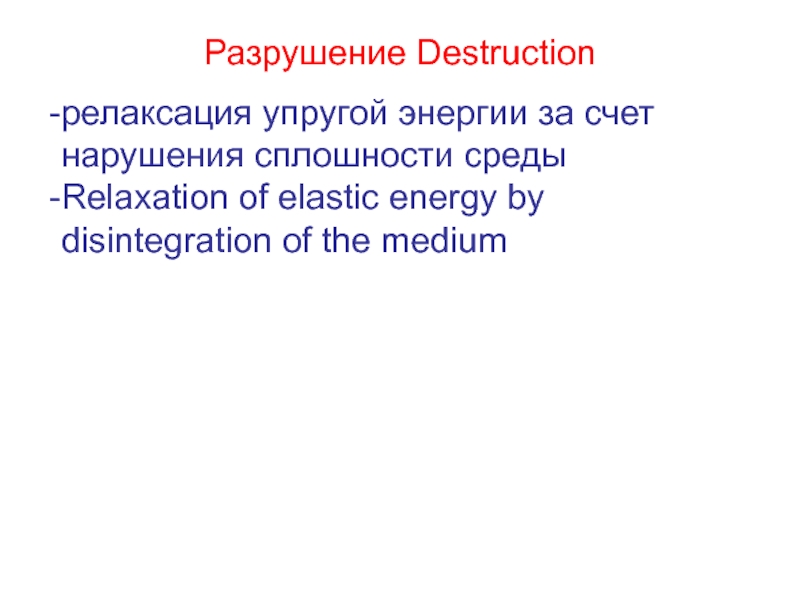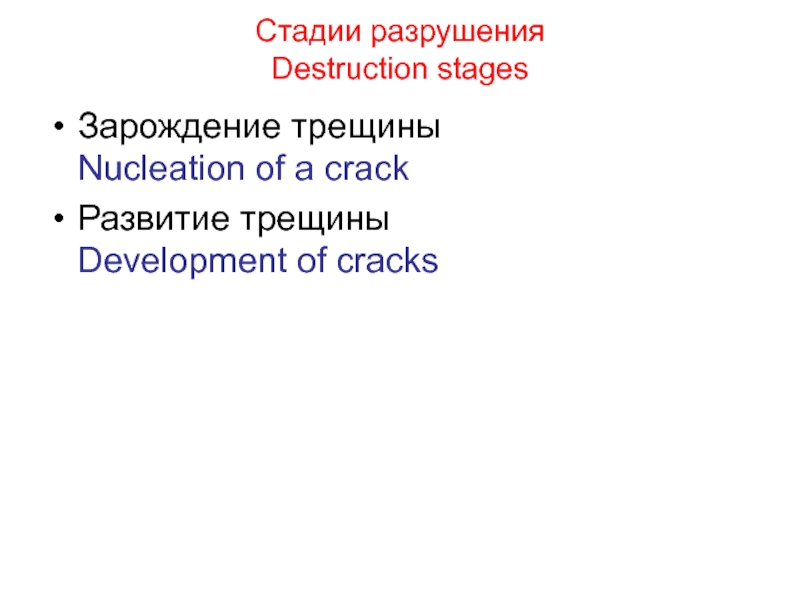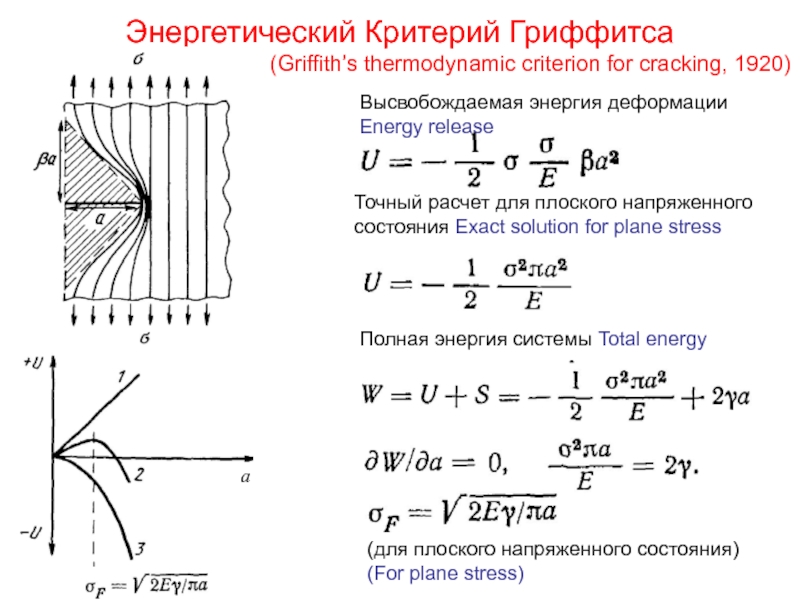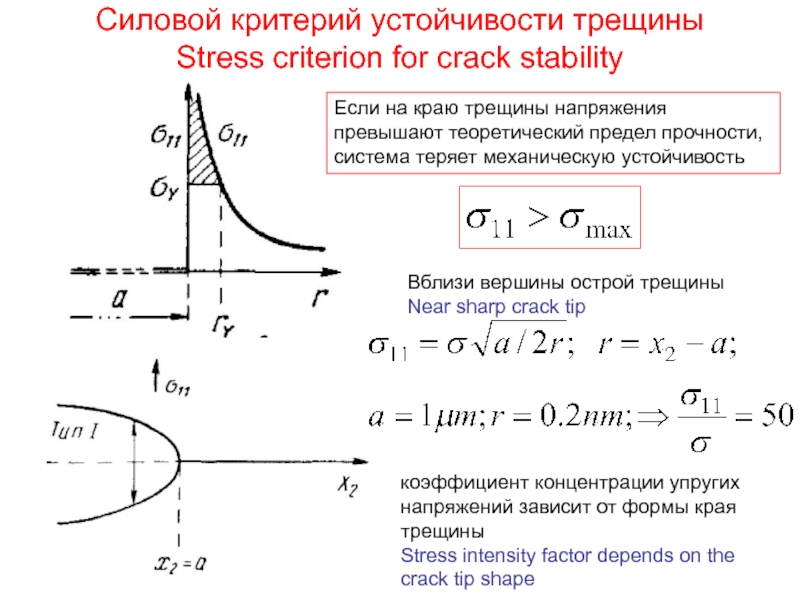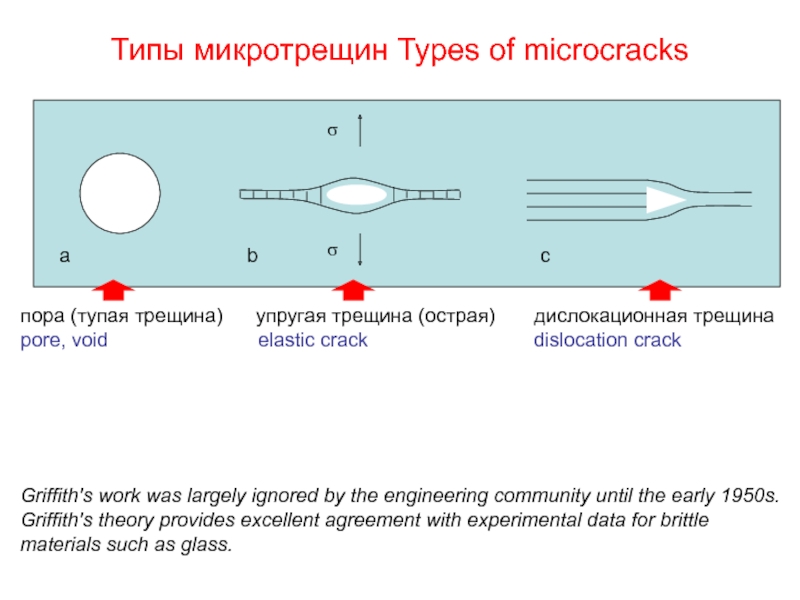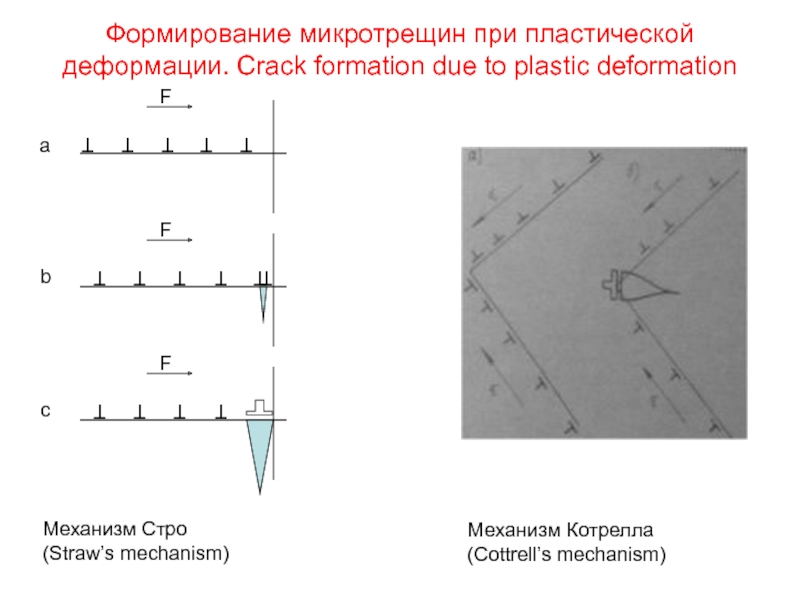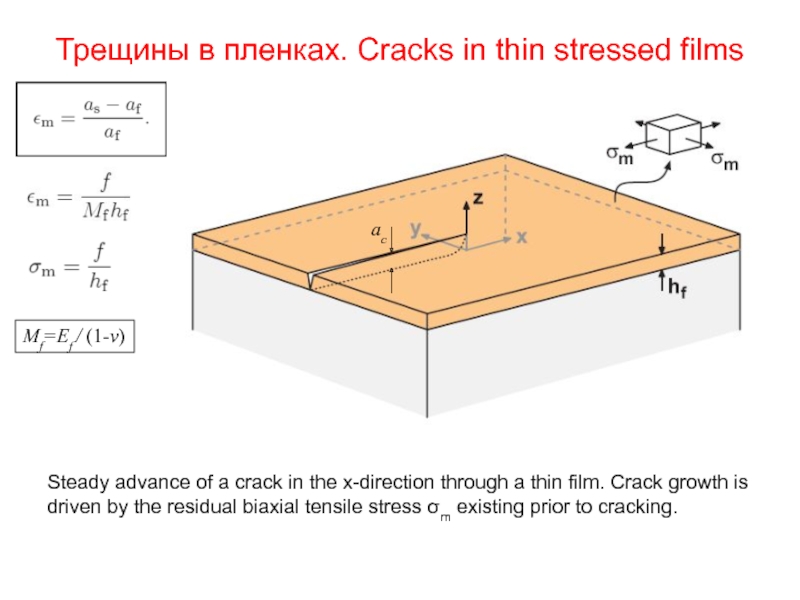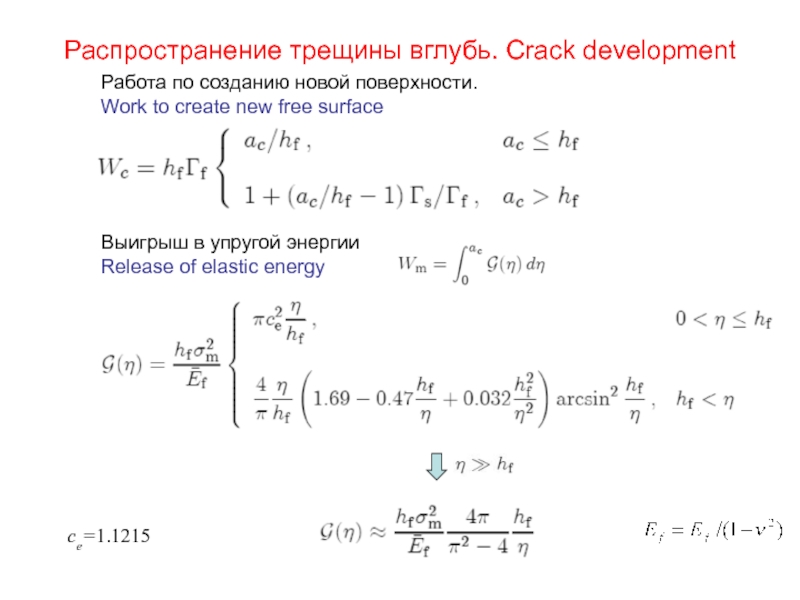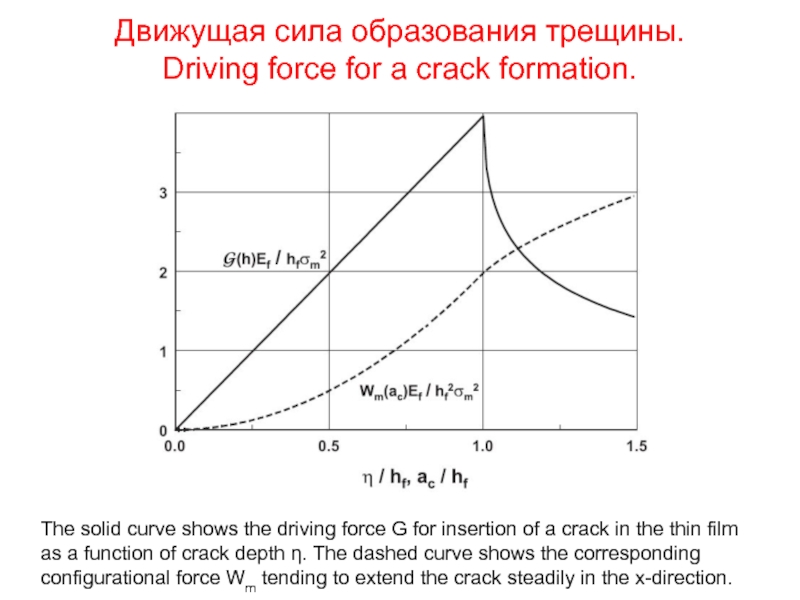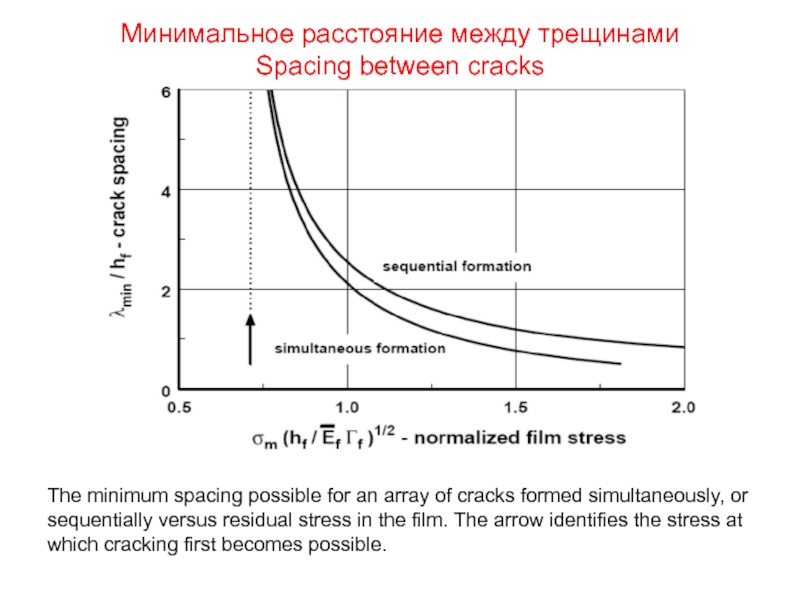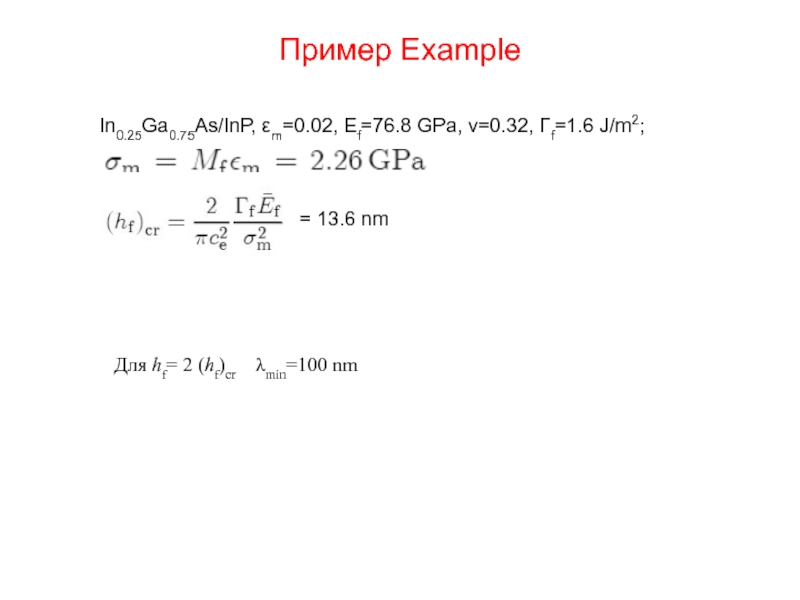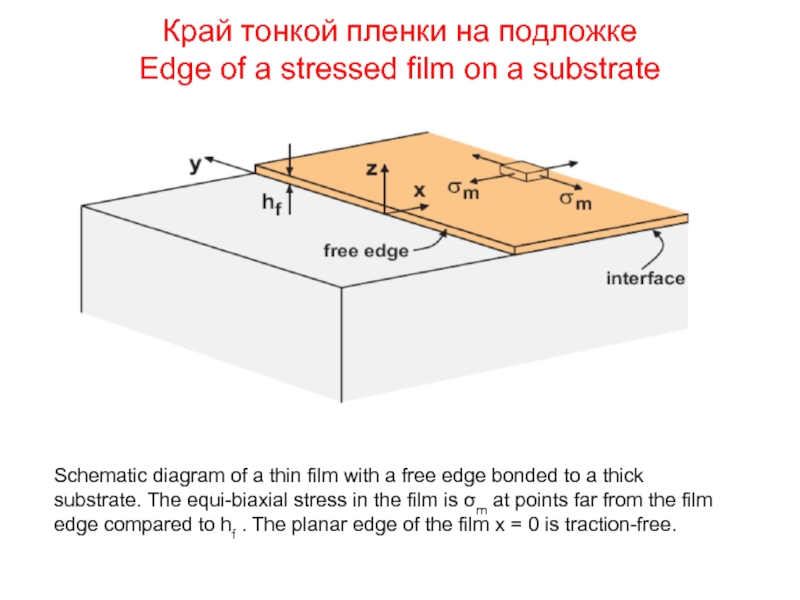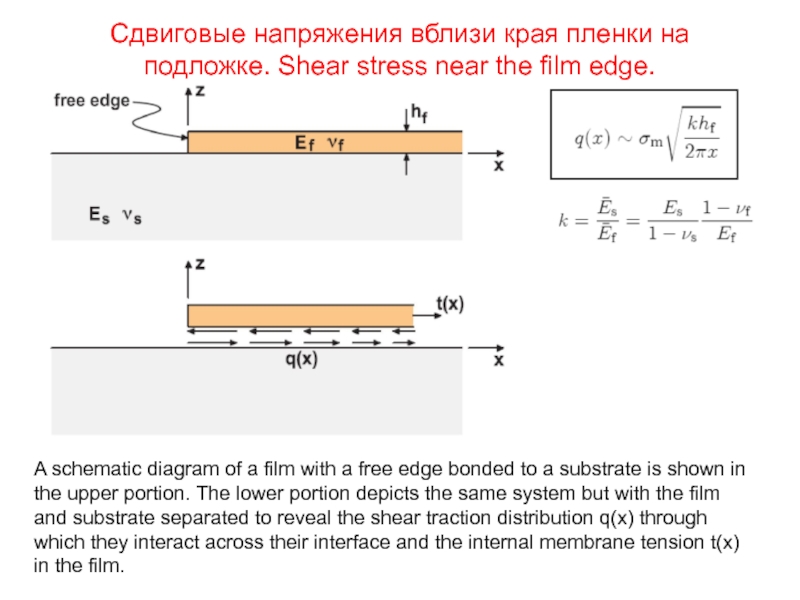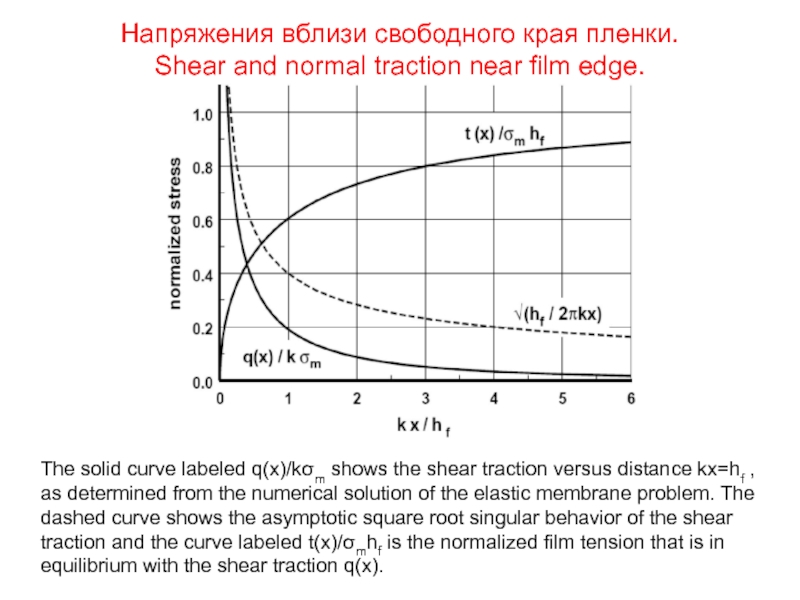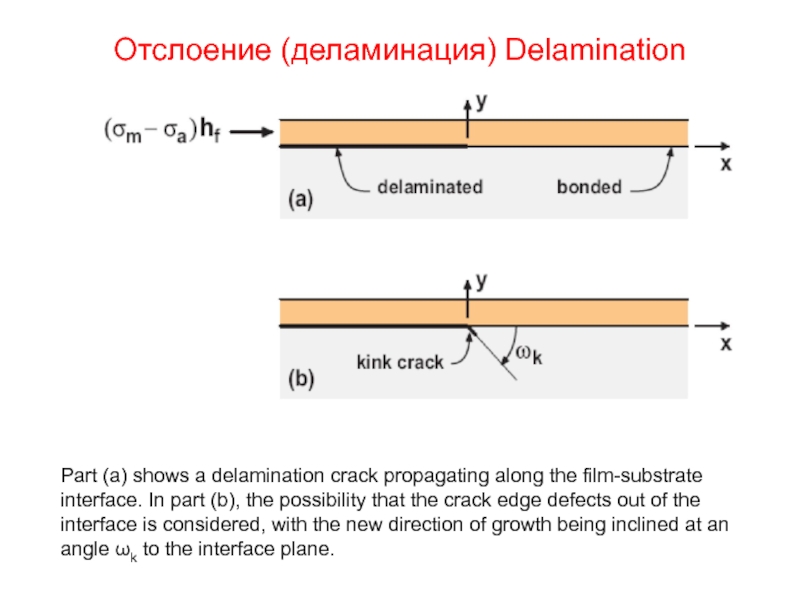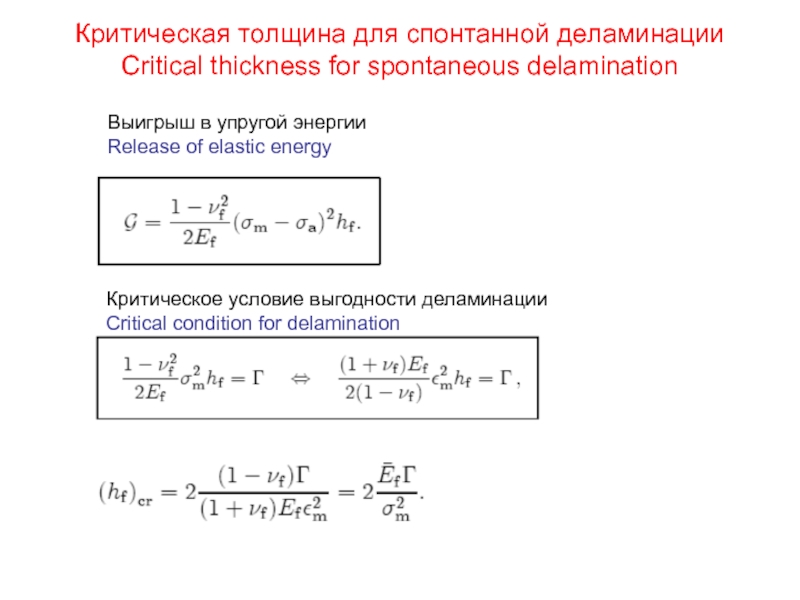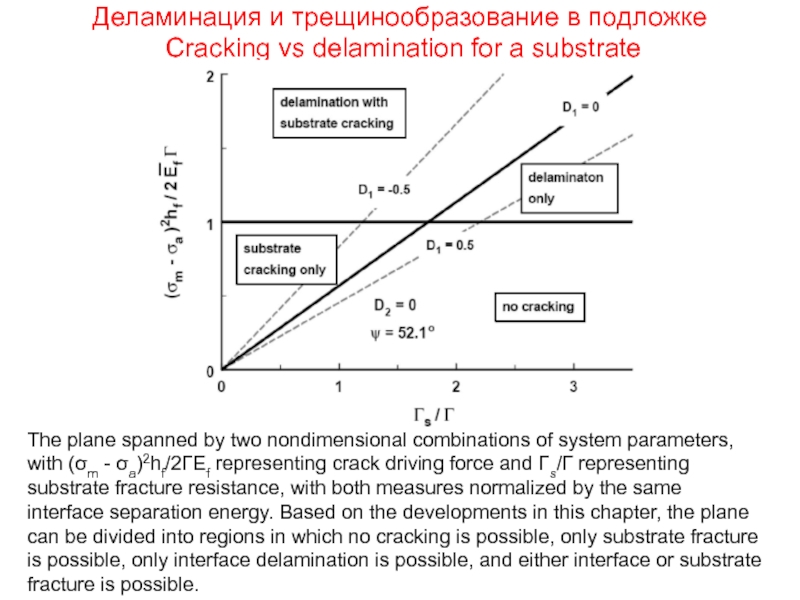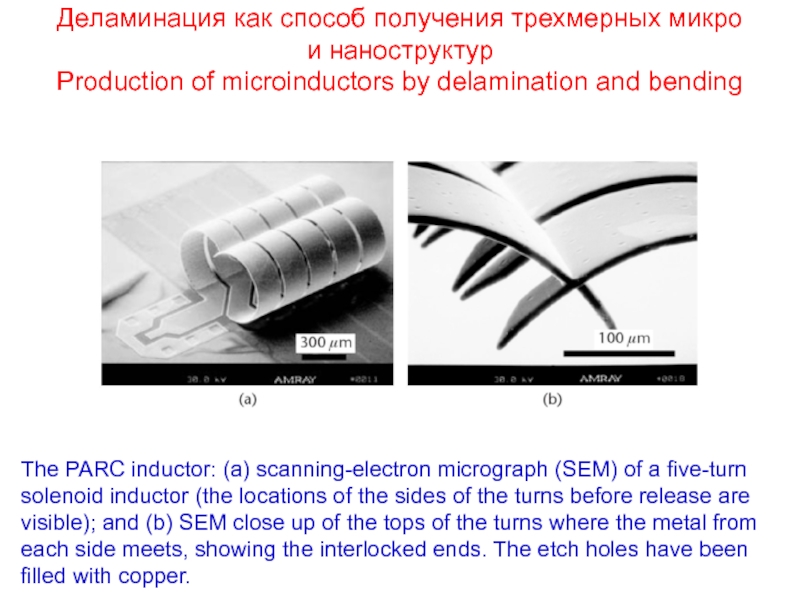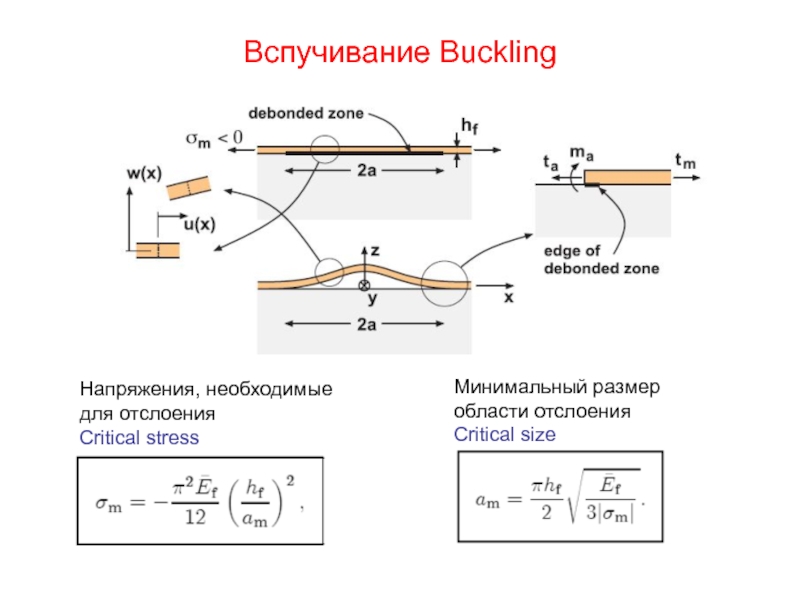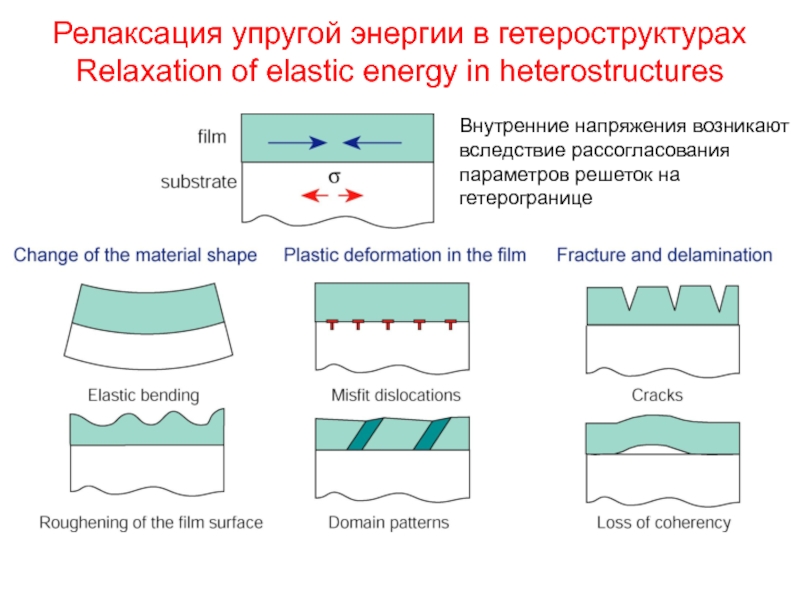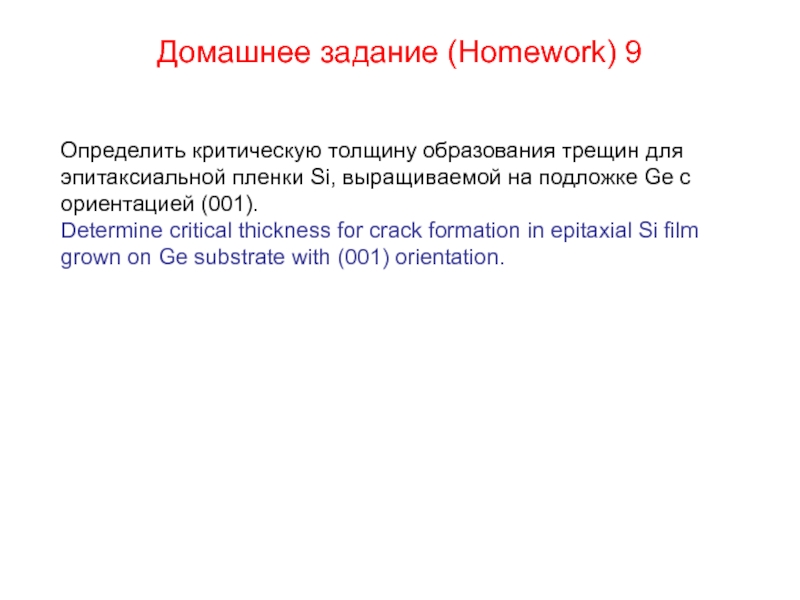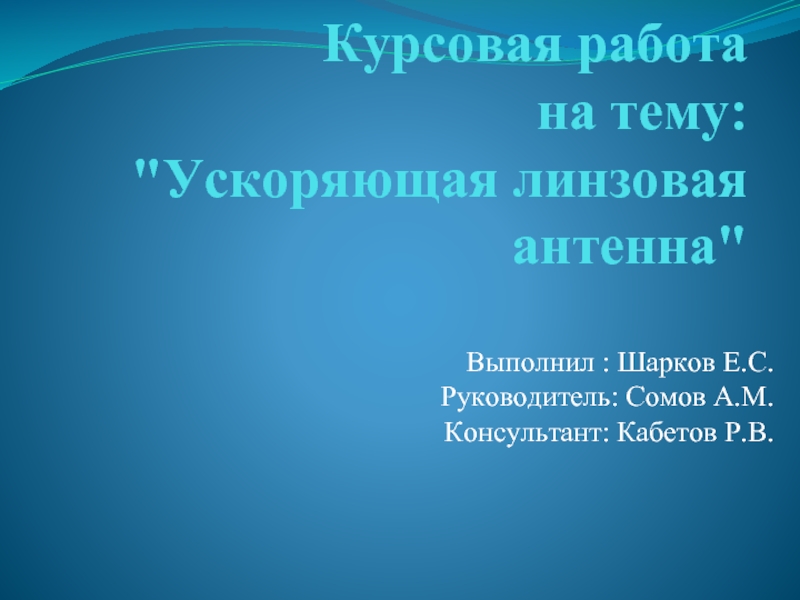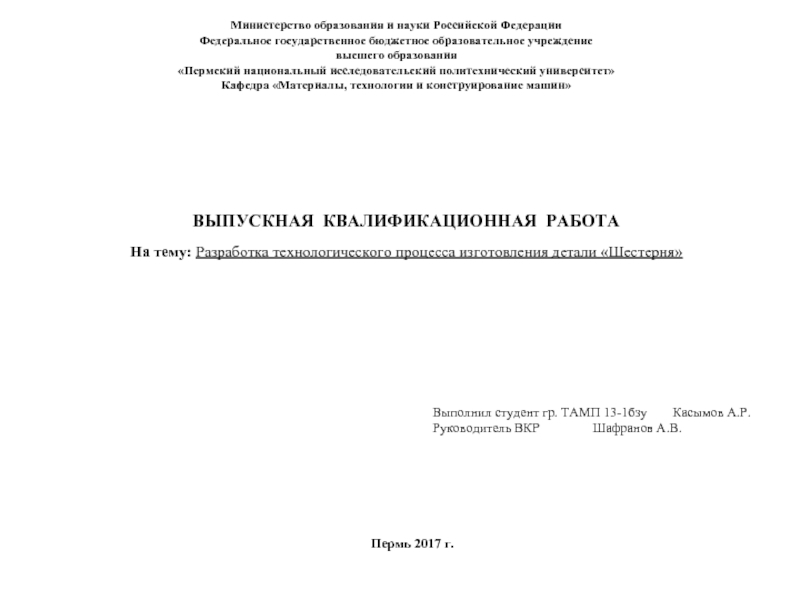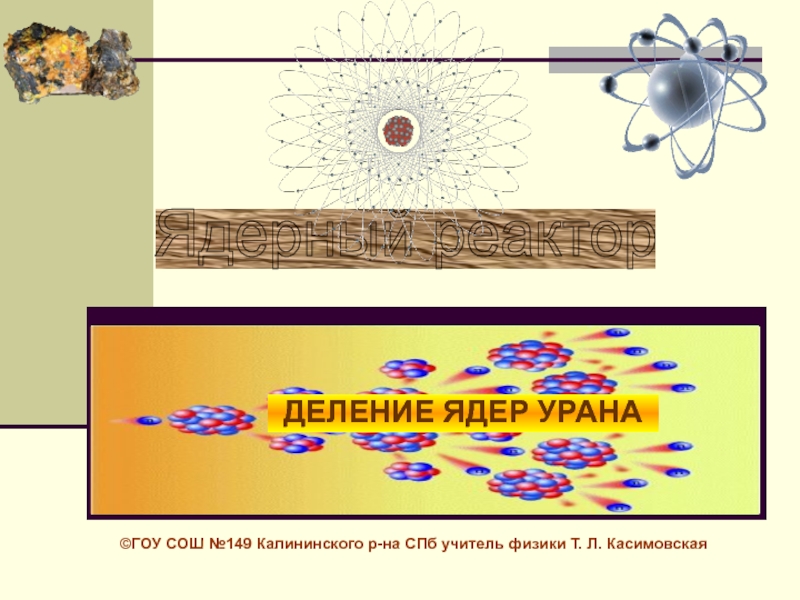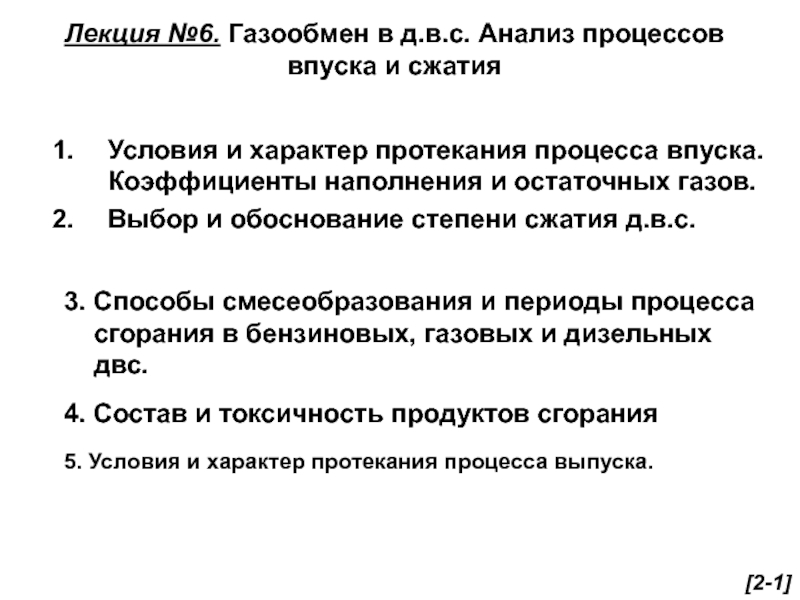- Главная
- Разное
- Дизайн
- Бизнес и предпринимательство
- Аналитика
- Образование
- Развлечения
- Красота и здоровье
- Финансы
- Государство
- Путешествия
- Спорт
- Недвижимость
- Армия
- Графика
- Культурология
- Еда и кулинария
- Лингвистика
- Английский язык
- Астрономия
- Алгебра
- Биология
- География
- Детские презентации
- Информатика
- История
- Литература
- Маркетинг
- Математика
- Медицина
- Менеджмент
- Музыка
- МХК
- Немецкий язык
- ОБЖ
- Обществознание
- Окружающий мир
- Педагогика
- Русский язык
- Технология
- Физика
- Философия
- Химия
- Шаблоны, картинки для презентаций
- Экология
- Экономика
- Юриспруденция
Разрушение. Теоретический предел прочности презентация
Содержание
- 1. Разрушение. Теоретический предел прочности
- 2. Разрушение Destruction релаксация упругой энергии за
- 3. Теоретический предел прочности Theoretical limit of strength
- 4. Стадии разрушения Destruction stages Зарождение трещины
- 5. Трещины Cracks Поле силовых линий у
- 6. Энергетический Критерий Гриффитса Точный расчет для плоского
- 7. Напряжения вблизи края трещины Stress near the
- 8. Вблизи вершины острой трещины Near sharp crack
- 9. Пора Pore, void Распределение напряжений у края
- 10. Типы микротрещин Types of microcracks пора (тупая
- 11. Формирование микротрещин при пластической деформации. Crack formation
- 12. Трещины в пленках. Cracks in thin stressed
- 13. Распространение трещины вглубь. Crack development Работа по
- 14. Движущая сила образования трещины. Driving force for
- 15. Критическая толщина для образования трещин. Critical thickness
- 16. Массив трещин Crack array Из анализа выигрыша энергии Per period λ
- 17. Минимальное расстояние между трещинами Spacing between cracks
- 18. Пример Example In0.25Ga0.75As/InP, εm=0.02, Ef=76.8 GPa, ν=0.32,
- 19. Край тонкой пленки на подложке Edge of
- 20. Сдвиговые напряжения вблизи края пленки на подложке.
- 21. Напряжения вблизи свободного края пленки. Shear and
- 22. Отслоение (деламинация) Delamination Part (a) shows a
- 23. Критическая толщина для спонтанной деламинации Critical thickness
- 24. Деламинация и трещинообразование в пленке Cracking vs
- 25. Деламинация и трещинообразование в подложке Cracking
- 26. Изгиб при деламинации. Bending when delamination. Schematic
- 27. Деламинация как способ получения трехмерных микро и
- 28. Вспучивание Buckling Минимальный размер области отслоения Critical size Напряжения, необходимые для отслоения Critical stress
- 29. Релаксация упругой энергии в
- 30. Домашнее задание (Homework) 9 Определить критическую толщину
Слайд 2Разрушение Destruction
релаксация упругой энергии за счет нарушения сплошности среды
Relaxation of elastic
Слайд 4Стадии разрушения
Destruction stages
Зарождение трещины
Nucleation of a crack
Развитие трещины
Development of cracks
Слайд 5Трещины Cracks
Поле силовых линий
у эллиптического отверстия
длиной 2а в центре
Elastic field around an elliptical crack
Схема воздействия усилий на атомные связи около вершины острой
трещины. Пунктиром условно
показаны разгруженные области.
Schematics of tension of atomic bonds
Слайд 6Энергетический Критерий Гриффитса
Точный расчет для плоского напряженного состояния Exact solution for
Высвобождаемая энергия деформации
Energy release
Полная энергия системы Total energy
(для плоского напряженного состояния)
(For plane stress)
a
(Griffith’s thermodynamic criterion for cracking, 1920)
Слайд 7Напряжения вблизи края трещины
Stress near the crack edge
x1
x2
σ22
σ11
σ12
Энергетический критерий является необходимым.
Griffith’s thermodynamic criterion is necessary for cracking.
But is it sufficient?
Слайд 8Вблизи вершины острой трещины
Near sharp crack tip
Если на краю трещины напряжения
коэффициент концентрации упругих напряжений зависит от формы края трещины
Stress intensity factor depends on the crack tip shape
Силовой критерий устойчивости трещины
Stress criterion for crack stability
Слайд 9Пора Pore, void
Распределение напряжений у края круглого отверстия с радиусом а
Коэффициент концентрации напряжений равен 3.
Stress intensity factor is 3.
Слайд 10Типы микротрещин Types of microcracks
пора (тупая трещина) упругая трещина
σ
σ
a
b
c
Griffith's work was largely ignored by the engineering community until the early 1950s.
Griffith's theory provides excellent agreement with experimental data for brittle materials such as glass.
Слайд 11Формирование микротрещин при пластической деформации. Crack formation due to plastic deformation
Механизм
Механизм Котрелла
(Cottrell’s mechanism)
Слайд 12Трещины в пленках. Cracks in thin stressed films
Steady advance of a
Mf=Ef / (1-ν)
Слайд 13Распространение трещины вглубь. Crack development
Работа по созданию новой поверхности.
Work to create
Выигрыш в упругой энергии
Release of elastic energy
ce=1.1215
Слайд 14Движущая сила образования трещины.
Driving force for a crack formation.
The solid curve
Слайд 15Критическая толщина для образования трещин. Critical thickness for cracking of a stressed
The solid curve shows the driving force Wm tending to extend a film crack versus the depth of penetration of that crack. The dashed curve shows the
material resistance to extension as the function of depth, drawn in this case for
Γs > 2Γf .
ce=1.1215
Слайд 17Минимальное расстояние между трещинами
Spacing between cracks
The minimum spacing possible for an
Слайд 18Пример Example
In0.25Ga0.75As/InP, εm=0.02, Ef=76.8 GPa, ν=0.32, Γf=1.6 J/m2;
= 13.6 nm
Для hf=
Слайд 19Край тонкой пленки на подложке Edge of a stressed film on a
Schematic diagram of a thin film with a free edge bonded to a thick
substrate. The equi-biaxial stress in the film is σm at points far from the film edge compared to hf . The planar edge of the film x = 0 is traction-free.
Слайд 20Сдвиговые напряжения вблизи края пленки на подложке. Shear stress near the
A schematic diagram of a film with a free edge bonded to a substrate is shown in the upper portion. The lower portion depicts the same system but with the film and substrate separated to reveal the shear traction distribution q(x) through
which they interact across their interface and the internal membrane tension t(x)
in the film.
Слайд 21Напряжения вблизи свободного края пленки.
Shear and normal traction near film edge.
The
Слайд 22Отслоение (деламинация) Delamination
Part (a) shows a delamination crack propagating along the
interface. In part (b), the possibility that the crack edge defects out of the interface is considered, with the new direction of growth being inclined at an angle ωk to the interface plane.
Слайд 23Критическая толщина для спонтанной деламинации
Critical thickness for spontaneous delamination
Выигрыш в упругой
Критическое условие выгодности деламинации
Critical condition for delamination
Слайд 24Деламинация и трещинообразование в пленке
Cracking vs delamination for a film
Plane of
σ2m hf / EfΓf versus Γ/Γf , divided into ranges of fracture behavior. The diagram applies for the case in which Γ/Γs < 0.26
Слайд 25Деламинация и трещинообразование в подложке
Cracking vs delamination for a substrate
The
with (σm - σa)2hf/2ΓEf representing crack driving force and Γs/Γ representing
substrate fracture resistance, with both measures normalized by the same
interface separation energy. Based on the developments in this chapter, the plane
can be divided into regions in which no cracking is possible, only substrate fracture
is possible, only interface delamination is possible, and either interface or substrate
fracture is possible.
Слайд 26Изгиб при деламинации. Bending when delamination.
Schematic representation of the edge force
axisymmetric buckle which forms on a circular region along the film-substrate interface.
Слайд 27Деламинация как способ получения трехмерных микро и наноструктур Production of microinductors
The PARC inductor: (a) scanning-electron micrograph (SEM) of a five-turn solenoid inductor (the locations of the sides of the turns before release are visible); and (b) SEM close up of the tops of the turns where the metal from each side meets, showing the interlocked ends. The etch holes have been filled with copper.
Слайд 28Вспучивание Buckling
Минимальный размер области отслоения
Critical size
Напряжения, необходимые для отслоения
Critical stress
Слайд 29
Релаксация упругой энергии в гетероструктурах
Relaxation of elastic energy in heterostructures
Внутренние напряжения
Слайд 30Домашнее задание (Homework) 9
Определить критическую толщину образования трещин для эпитаксиальной пленки
Determine critical thickness for crack formation in epitaxial Si film grown on Ge substrate with (001) orientation.

